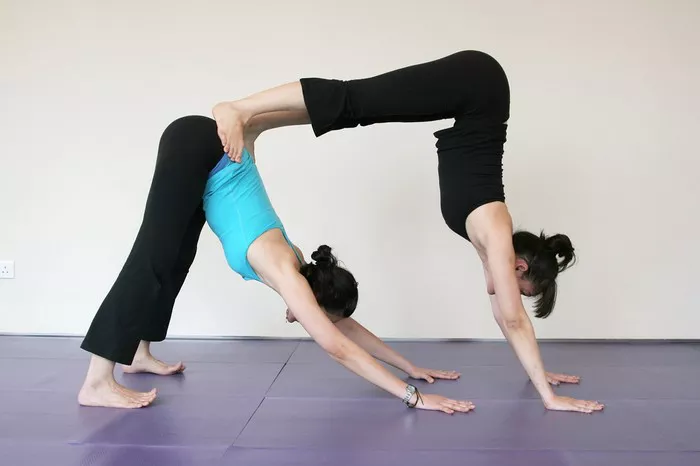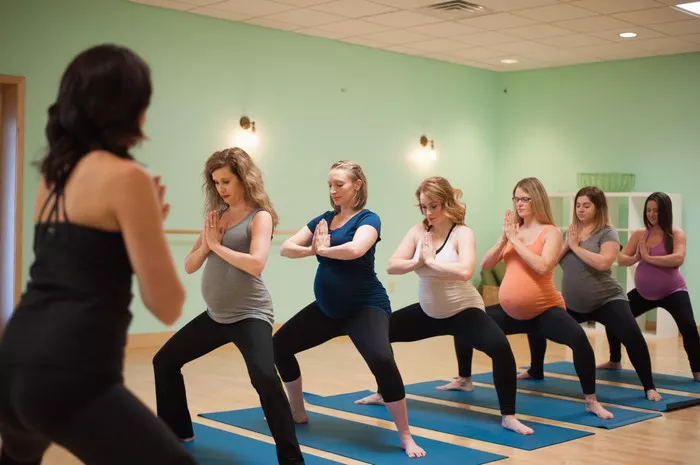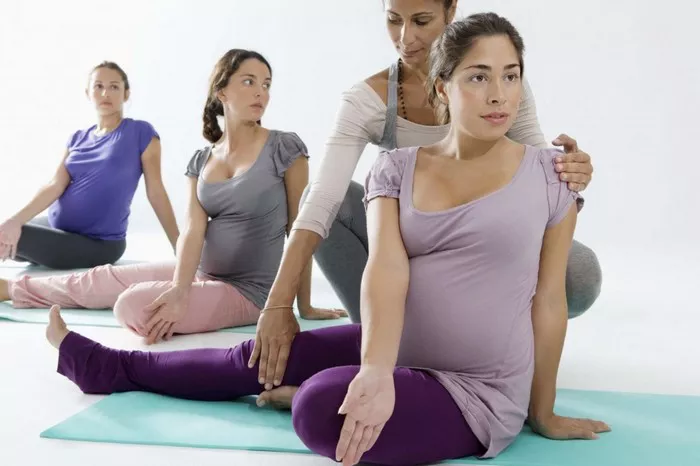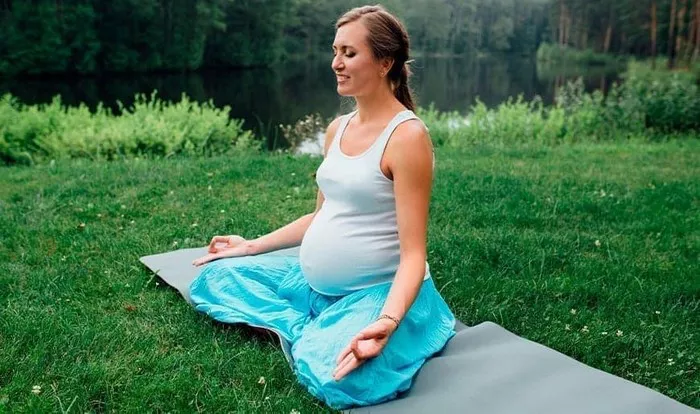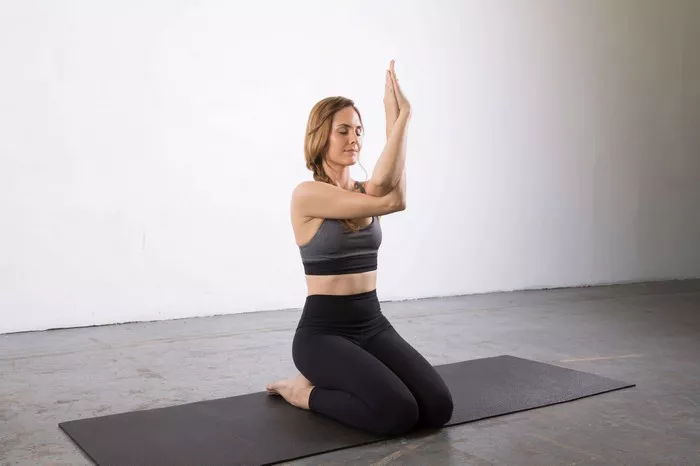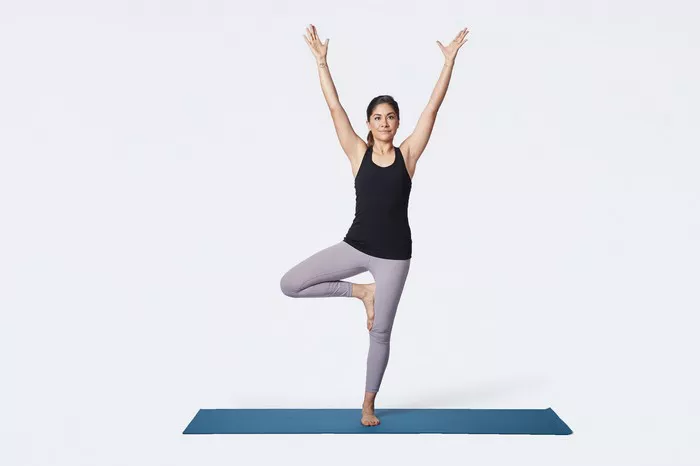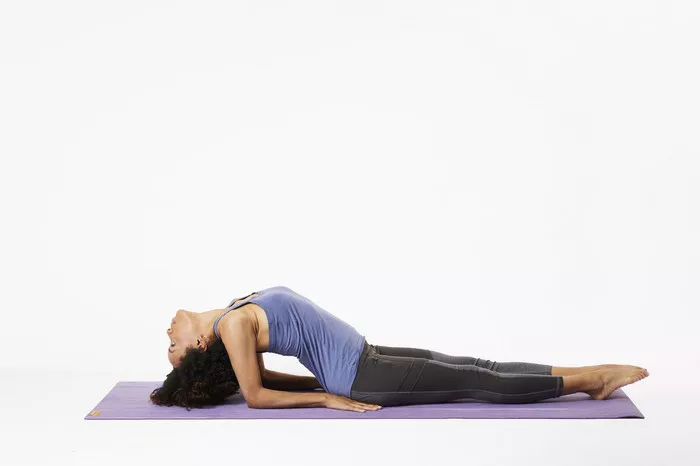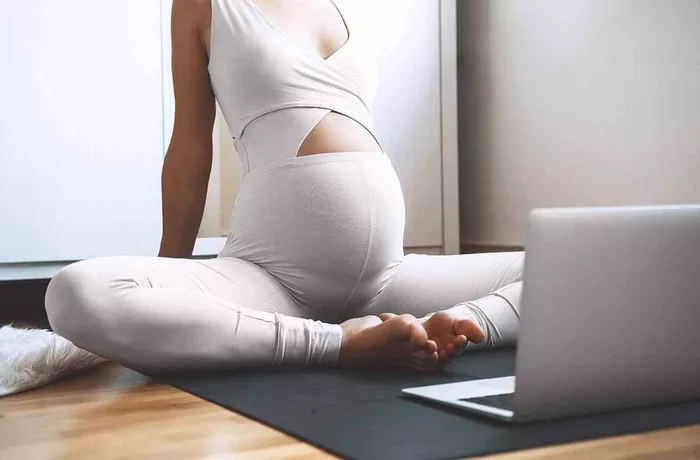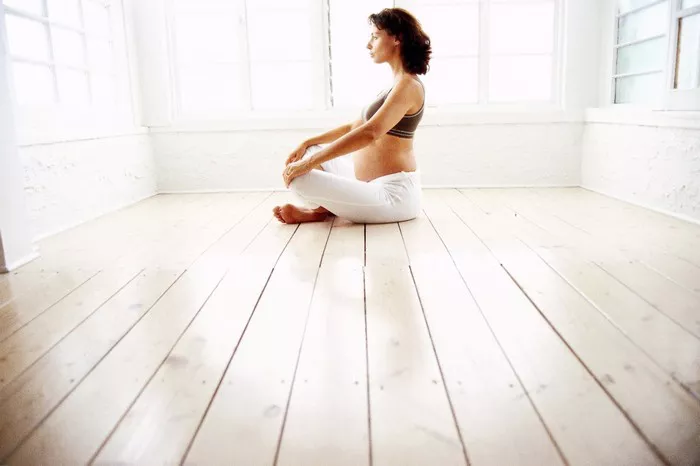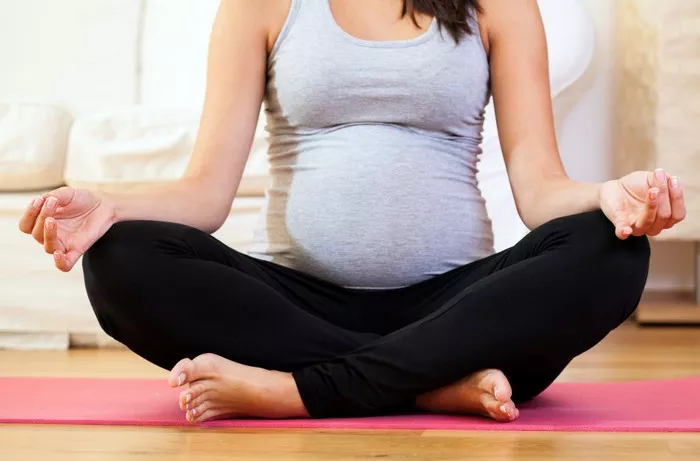Yoga, an ancient practice originating from India, has evolved over centuries to become a popular form of exercise and relaxation worldwide. While traditionally practiced solo, yoga also offers a unique experience when done in pairs or groups. Partner yoga, in particular, fosters connection, trust, and communication between participants, all while deepening the physical and emotional aspects of the practice. In this article, we’ll explore a variety of fun and engaging yoga poses designed for two individuals. Whether you’re seeking to bond with a friend, partner, or family member, these poses are sure to add an extra element of enjoyment to your yoga routine.
1. Double Downward Dog
Start by standing facing each other, about an arm’s length apart. Both partners should come into a downward dog position by placing their hands on the ground shoulder-width apart and walking their feet back until their bodies form an inverted V shape. Once stable, partners can reach out and hold each other’s hands for support, creating a deeper stretch through the shoulders and upper back. Hold the pose for several breaths, then release and switch roles if desired.
2. Partner Boat Pose
Sit facing each other with your knees bent and feet flat on the ground. Hold hands and lean back slightly, engaging your core muscles. Lift your feet off the ground, bringing your shins parallel to the floor. Find your balance and straighten your legs, creating a V shape with your bodies. Keep your spines straight and shoulders relaxed as you hold the pose together. For added challenge, partners can extend their arms forward and gently push against each other’s palms.
3. Seated Twist with a Partner
Sit back-to-back with your partner, legs extended in front of you. Inhale to lengthen your spine, then exhale and twist to the right, placing your left hand on your right knee and your right hand on the floor behind you for support. Your partner will mirror the movement, twisting to the left and placing their right hand on your left knee. Use each other’s support to deepen the twist, feeling the stretch through your spine and torso. Hold for several breaths, then switch sides to balance the stretch.
4. Partner Forward Fold
Stand facing your partner, about arm’s distance apart. Reach out and hold each other’s forearms or hands. As you inhale, lengthen your spine, and as you exhale, hinge at the hips and fold forward, maintaining a straight back. Allow your arms to gently pull against each other, deepening the stretch through the hamstrings and lower back. Keep a slight bend in your knees if needed to prevent strain. Hold the pose for several breaths, then slowly release and come back to standing.
5. Double Tree Pose
Stand side by side with your partner, facing the same direction. Shift your weight onto one foot and lift the opposite foot, placing the sole against the inner thigh or calf of your standing leg. Find your balance and bring your palms together at your chest in a prayer position. Once steady, partners can reach out and hold each other’s free hands for added support. Focus your gaze on a fixed point to help maintain balance, and breathe deeply as you hold the pose. Switch sides to balance both sides of the body evenly.
6. Partner Camel Pose
Kneel facing each other, about an arm’s length apart. Reach back and hold onto your partner’s ankles for support. Inhale to lengthen your spine, then exhale and slowly lean back, allowing your chest to open and your head to drop back if comfortable. Your partner will mirror the movement, providing stability and support from behind. Keep your thighs perpendicular to the floor and engage your core to protect your lower back. Hold the pose for several breaths, then gently release and come back to a kneeling position.
7. Partner Shoulder Stand
Lie on your back with your knees bent and feet flat on the floor. Your partner will stand at your feet, facing towards your head. As you inhale, lift your legs towards the ceiling, coming into a shoulder stand with your hands supporting your lower back. Your partner will then come into a forward fold, placing their hands on your thighs for support as they lift their legs towards the ceiling. Once both partners are stable, reach out and hold each other’s ankles or shins for added support. Keep your neck long and avoid turning your head to the side. Hold the pose for several breaths, then slowly release and come back to lying flat on the ground.
8. Partner Plank Pose
Begin in a plank position facing each other, with your bodies parallel to the ground and arms extended beneath your shoulders. Your feet should be hip-width apart, and your core engaged to support your spine. Once stable, reach out and hold each other’s forearms or hands for added stability. Keep your gaze slightly forward and your neck in line with your spine. Hold the pose for several breaths, then release and come back to a resting position.
9. Double Pigeon Pose
Sit facing your partner with your knees bent and feet flat on the floor. Bring your right ankle to rest on your left knee, creating a figure-four shape with your legs. Your partner will mirror the movement, bringing their left ankle to rest on their right knee. Both partners should sit up tall, gently pressing their knees towards the ground to deepen the stretch through the hips and outer thighs. Hold the pose for several breaths, then switch sides to balance the stretch.
10. Partner Wheel Pose
Lie on your backs with your knees bent and feet flat on the floor, hip-width apart. Your partner will stand at your head, facing towards your feet. As you inhale, press into your hands and feet to lift your hips towards the ceiling, coming into a bridge pose. Your partner will then reach down and hold onto your hands for support as they lift their legs towards the ceiling, coming into a wheel pose. Once both partners are stable, engage your core and thighs to lift your hips higher. Hold the pose for several breaths, then gently release and come back to lying flat on the ground.
Conclusion
Partner yoga offers a fun and interactive way to deepen your practice while strengthening your connection with others. These ten poses are just a starting point for exploring the endless possibilities of partner yoga. Whether you’re looking to enhance your physical flexibility, improve communication with a loved one, or simply have fun trying something new, practicing yoga with a partner can be a rewarding and enjoyable experience. Remember to communicate openly with your partner, listen to your body, and most importantly, have fun exploring the practice together.

